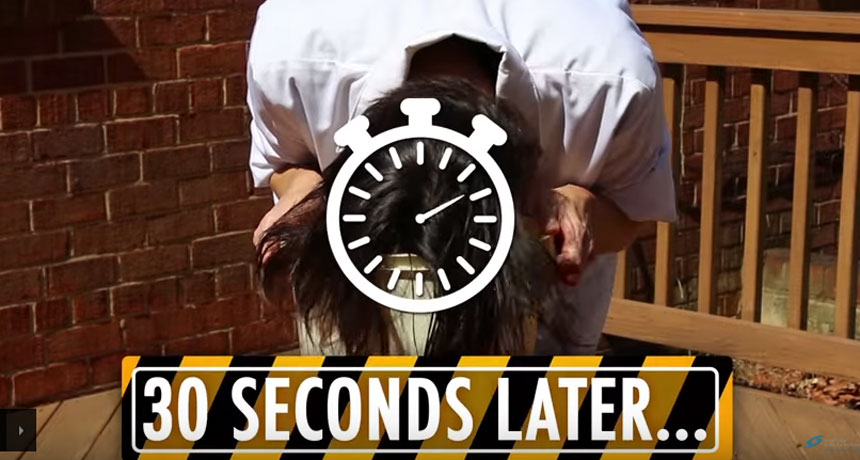Help us fund the Eureka! Lab video series
Let’s put real experiments on video for everyone to see — and then do

I plunged my head in a bucket of ice water for science. And here’s why: I want to make videos showing kids how to turn demos into real experiment!
Explainr/SSP
On a chilly day a few weeks back, I held my breath and plunged my head into a bucket full of ice water. I counted carefully as my face ached from the cold. When I pulled my head out 30 seconds later, gasping for air, I slapped a stethoscope to my chest to measure how fast my heart was beating. Then I toweled off and did it again. And again.
Why?
My icy adventure was not a new version of the popular ice bucket challenge for charity. Nor am I a glutton for punishment. No, this was a ploy to get your attention — and help — to create a new video series. If we can raise $25,000, Eureka! Lab will launch a new series to show how anyone can perform real scientific experiments.
By dunking my face in ice water, I illustrated a scientific concept known as the mammalian diving reflex. When mammals — like me — are plunged into icy water, our bodies react in a way that allows them to function in a low-oxygen environment. For people, this means our heart rates will slow down. All it takes to trigger this effect is merely sticking my head in really cold water. It’s something I not only can witness, but also measure.
A cool (or cold!) bit of entertainment, it shows how the human body works. Many science videos offer such demonstrations of important scientific concepts. And that’s great. Demonstrations can be wild and fun.
But demonstrations are not experiments. They usually show something only once. To do an experiment, scientists need to repeat a test many times. They also need to test a hypothesis — a proposed explanation for a phenomenon. This means they need to compare one group of tests against another, changing only one aspect of the experiment at a time. Then data from the experiments have to be analyzed using statistics to figure out what the results mean.
The steps needed to turn demos into research aren’t always obvious. For instance, how many times must someone repeat a test? How must the data be collected and analyzed to be meaningful? Answering such questions is what will set this video series apart.
Turning demonstrations into real research
I’ve been documenting how to create experiments on this blog — from cookie science and popcorn science to using a laser pointer to measure the width of a single hair. Now I want to bring these experiments to life in videos.
SCIENCE YOUR LIFE Help fund a Eureka! Lab video series! Explainr/SSP |
Science doesn’t have to be expensive or require a big lab. My videos will show how to use the scientific method and rely on low-cost easy-to-get materials — some that you can even buy at the grocery store. On my blog, I will include the full methods for each experiment. I’ll post all of my data so that students can follow along and compare their results to mine. I’d also like to include teacher guides to help bring these videos to the classroom.
To make the videos, I will be partnering with Explainr. They are a team of filmmakers that specialize in creating educational and fun science videos. I got to work with them in an American Chemical Society Reactions video about cookies. Explainr makes great videos with fun animation that everyone will love to watch.
Society for Science & the Public — the publisher of Eureka! Lab — is a non-profit organization that seeks to inform, educate and inspire teens in science. The Eureka! Lab video series would be an important new element of that.
But we need your help to make this all happen! We’ve got a campaign set up on Rally.org, with great gifts for people who donate. The money we raise will go to paying for video production and animation, writing scripts and blog posts, buying experimental materials and writing teacher guides to bring these experiments to the classroom.
Do you want to “science your life”? I know I do! Let’s do some experiments together.
Follow Eureka! Lab on Twitter
Power Words
(for more about Power Words, click here)
diving reflex A reflex in mammals that can allow them to survive low levels of oxygen when they are in cold water. As soon as mammals plunge their faces into ice water, their veins constrict and their heart rate slows.
hypothesis A proposed explanation for a phenomenon. In science, a hypothesis is an idea that must be rigorously tested before it is accepted or rejected.
statistics The practice or science of collecting and analyzing numerical data in large quantities and interpreting their meaning. Much of this work involves reducing errors that might be attributable to random variation. A professional who works in this field is called a statistician.